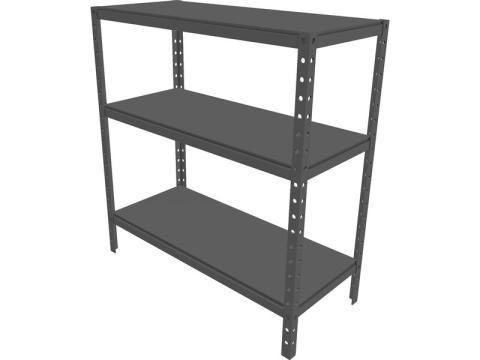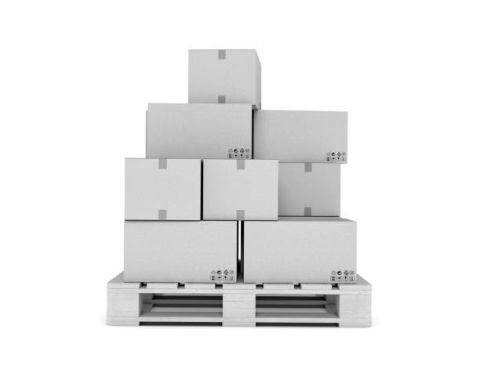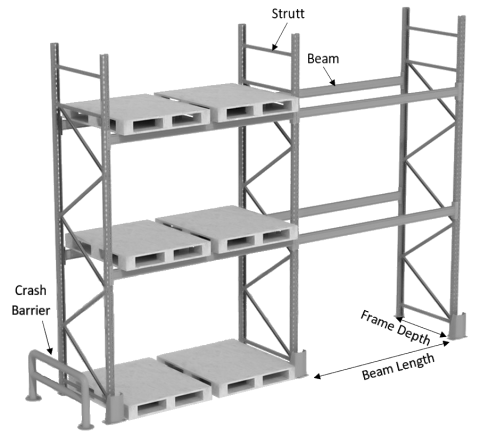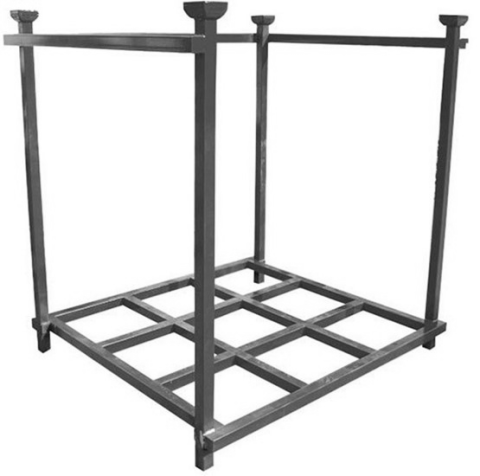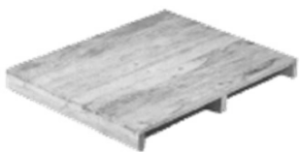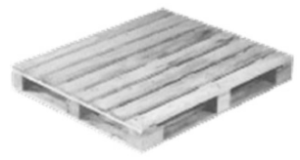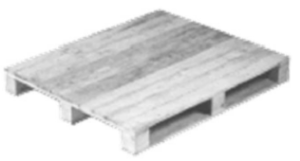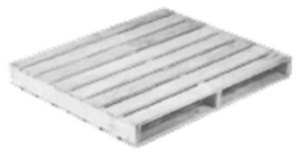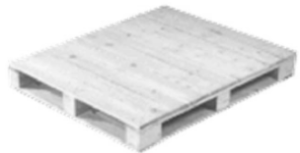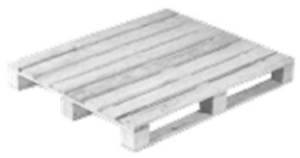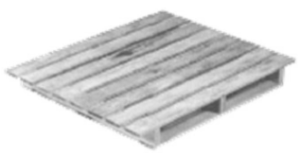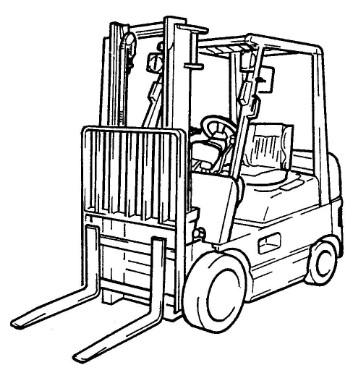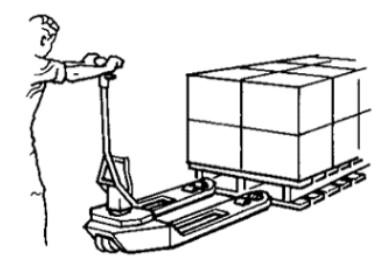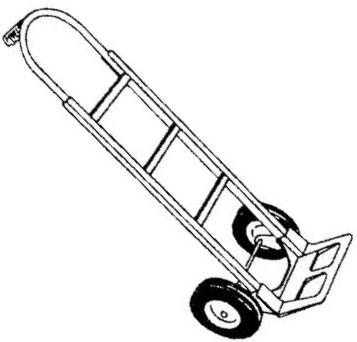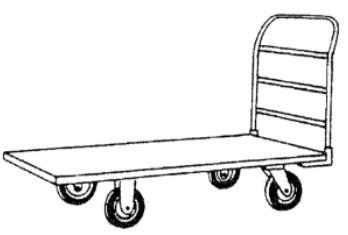The ways in which cargo is physically stored in a warehouse can dramatically increase usable storage space, increase efficiency, and impact safety. Generally, there a few main categories through which cargo is physically stored and handled.
Shelving
Unlike racks which are used to manage pallet sized loads, shelving used in warehousing is useful for:
- Small, low quantity, loose items – example: vehicle replacement parts.
- Items that are dispensed at small quantities – example: medications.
- High value items – example: computer equipment.
Shelving can easily be constructed in remote field warehouses from local materials, insofar as the local materials can physically support the required stored items. Shelving can also be installed anywhere inside a larger warehouse, however the location should make contextual sense. As an example, shelving may be used as an intermediary stage of order fulfilment; a warehouse may have pallets/large cartons of items small items, but only receive pick orders for low quantities. A reasonable quantity of stock may be moved to pre-defined shelf space to facilitate ease of fulfilling low or item level pick orders. Shelving may require a separated space physically separated from the main warehouse floor; high value items or controlled goods might be better suited stored on shelving in a separate lockable space.
Shelving installations should be ergonomic; shelves should not be so deep that an average height adult cannot reach to the back of the shelf, while shelves should not reach unsafe heights, and if possible, should avoid requiring ladders or stools to reach the top.
Loose Stacking / Ground Storage
Ground storage includes anything that is stored on the floor of a warehouse, often compiled in stacks. Items stored on the ground should never be directly in contact with the warehouse floor; cargo should rest on pallets, or if pallets unavailable, tarpaulin. The general configuration of ground floor stacks will vary based on the storage needs, including:
- The number of different items SKU items that might require accounting.
- The weight of cargo limiting height.
- The physical nature of the cargo; cartons can be evenly stacked, while irregular kits in sacks might be piled like a pyramid.
Ground storage of loose items is quite common in humanitarian settings. Most remote field warehouses are usually too small to accommodate special equipment installation, lack the sufficient infrastructure to properly support MHE, or are temporary structures in nature. A substantial portion of humanitarian relief supplies don’t necessarily require advanced handling either. There are several tricks to properly managing stacks of cargo, which are covered in the stock management section of this guide. Humanitarian agencies should resist the urge to use ground handling in all contexts despite its prevalent nature; commodities such as medication may benefit from not being stacked in a pile. Space planers should also resist the urge to fill up all available space when utilising ground storage; warehouses and storage facilities using ground storage and stacking should still observe the 70/30 rule, keeping lanes and aisles open for safety while making room for loading and offloading.
Racking
Warehouse racking – sometimes referred to as pallet racking – is a heavy-duty metal superstructure that is specifically designed to hold large, pallet sized items. Each space where a pallet might fit is referred to as a pallet bay, and pallet bays are generally counted as “pallet positions” when counting warehouse space availability. Palletised cargo, bulky items stored on pallets, or oversized cargo of a specific size can be loaded onto pallet racking using a forklift. The bottom bay can usually be loaded with a pallet jack, or may kept open for hand stacking smaller items. Properly utilised racks can dramatically increase the storage capacity of a warehouse, maximising three-dimensional space to the best of its ability.
Pallet racks can be built to meet the floor plan and storage needs of a warehouse, and the cross beams upon which pallets sit are adjustable to match changing storage height needs. There are different types of racking system that can be considered in accordance with the storage requirements- Very Narrow Aisle (VNA), Selective racking, Drive-in/Drive through, Candiliver, bins, and more - however any agency considering different options should consult with private companies offering installation and management services to better understand the requirements and needs of each. The vertical space between rack cross beams should be reasonable; too high and space is wasted, too low and pallets may become stuck or cannot be properly inserted. An average height is around 1.5 meters, but adjustments may be required based on context of the pallet or items stored. Racks can be built to hold vertical stacks of pallets up to 20 meters tall, however racks should never exceed the safest lifting height of the available forklift on site, nor should they get closer than 2 meters from the ceiling. The horizontal frame depth between rack cross beams should not be wider than the expected pallet type to prevent pallets falling through, and irregular shaped objects may not rest neatly or safely without an additional flat surface resting across the two beams.
Pallet racking systems should only be installed by professional companies with demonstrated experience. Racking systems also require warehouse floors to be sufficiently thick and strong, as racks will need to be physical bolted to the ground. Racking must be safely operated around and maintained; physical racking structures must not show signs of distress, corrosion or damage. Compromised racking structures can easily collapse causing substantial loss to stored items and serious injury or death. Wherever possible, racks should have some form of physical crash barrier at corners of rows and lanes to prevent damage from handling equipment. Only persons trained and certified to operate a forklift should be engaged in loading and offloading cargo from metal racking structures.
Stacking Frames
Related to pallet racks, stacking frames are pre-made metal super structures that are designed to vertically stack cargo. Unlike pallet racks, stacking frames are free-standing, and are highly customisable and modular.
A single stacking frame is typically cubic in shape, and around 1.5 x 1.5 meters at the base, though sizes vary. Most stacking frames can either be nested into each other when not being used, or even be taken apart, saving space. Stacking frames are useful for:
- Stacking irregularly shaped cargo.
- Warehouse space with constantly changing racking needs.
- Quickly moving entire racks from one place to another.
If loose cargo is stored in the racks, it should be properly braced, secured, or wrapped. The entire frame can be moved by a forklift, and frames can be easily stacked as high as safely possible to take advantage of vertical space. Unfortunately, stacking frames can only be used in warehouses with smooth and stable floors, and where forklifts can safely operate. Many larger facilities use stacking frames to augment racking and shelving, especially for irregular shaped items that cannot be easily stacked otherwise.
Pallets
Pallets have become ubiquitous across transport and warehousing operations globally, however there is a wide variety of sizes, dimensions and physical construction of pallets. Though local warehouse managers may have very little control over the types of pallets that might arrive, an understanding of pallet differences can assist with both space planning, and safe utilisation of racking and MHE.
Pallets generally come in a few standard dimensions. ISO Pallet Standard Dimensions are:
| Dimensions (Metric) | Dimensions (Imperial) | Floor Space (Square Meters) | Region Most Used In | ||
|---|---|---|---|---|---|
| W (mm) | L (mm) | W (in) | L (in) | ||
| 1016 | 1219 | 40 | 48 | 1.2 | North America |
| 1000 | 1200 | 39.37 | 47.24 | 1.2 | Europe, Asia |
| 1165 | 1165 | 45.9 | 45.9 | 1.4 | Australia |
| 1067 | 1067 | 42 | 42 | 1.1 | North America, Europe, Asia |
| 1100 | 1100 | 43.3 | 43.3 | 1.2 | Asia |
| 800 | 1200 | 31.5 | 47.24 | 1 | Europe |
Both the square meters and side dimensions of pallets have implications for how pallets consume floor space in warehouse and trucks, how pallets may fit through doors, and how a pallet might be stored in elevated pallet racking. In addition to differing dimensions, there are different body constructions and different materials used in building pallets. Common pallet constructions:
Two-way entry pallet - close boarded, no base board | Four-way entry pallet - perimeter base |
Four-way entry pallet - close boarded, 3 base | Two-way entry pallet - reversible |
Four-way entry pallet - close boarded, perimeter base | Four-way entry pallet - open boarded, 3 base |
Four-way entry pallet - wing type | Two-way entry pallet - wing type |
- Pallets come in either two-way entry or four-way entry, meaning forks can lift from only two side or all four sides.
- Pallets can be reversible or non-reversible. Non reversible pallets mean only one side has a stable surface upon which cargo can be stored. Non reversible pallets are sometimes called “skids.”
There may also be requirements for pallets to be fumigated, heat treated, or made of plastic. Pallets are predominantly made of wood, and different wood sources are more prone to infestations that can impact stored goods. Some countries even have regulations prohibiting the use and transportation of untreated wood pallets.
A printable guide to pallet dimensions can be downloaded here.
Material-Handling Equipment (MHE)
Material-Handling Equipment (MHE) is defined as any mechanised or manual machinery to assist with the movement of cargo, either around a warehouse or during the transport process.
Proper use of MHE requires not just the equipment, but the infrastructure to surround it. Pallet jacks, carts and some forklifts will only work on flat, hard and smooth surfaces. Some MHE – forklifts in particular – require external power such as diesel, natural gas or electricity. Without the ability to supply this external power to MHE that requires it, the MHE is essentially useless.
MHE is designed to do heavy lifting; it can help warehouse personnel move heavy loads but can also be very dangerous. Forklifts can easily hurt or kill workers, while a pallet jack may enable workers to move pallets far heavier than they realise, compromising the safety of others. While utilising MHE, warehouse staff should be properly trained and use proper safety equipment.
MHE typically involved in warehousing operations might include:
Forklifts – A mechanised power loader capable of lifting full pallets and heavy equipment. Forklifts come in a variety of sizes to meet a variety of load needs, but generally come with an enclosed cab and a four wheel base. All forklifts will have a hydraulic or chain powered “mast” capable of extending and lifting cargo vertically. The height and lift capacity of the mast depends on the rating of the forklift, and more information can be found from the manual or manufacture website. Depending on the make, forklifts can be powered by either battery, compressed gas, or diesel/gasoline. Forklifts are generally designed for either use inside a warehouse with even surfaces, or for all terrain outdoor use. Before obtaining a forklift, humanitarian agencies should consider:
| |
Pallet Jacks – Sturdy, low centre push cart with forks capable of lifting a pallet a few centimetres off the ground. Pallet jacks are typically only powered by hand, using a hydraulic piston to gently lift and lower pallets. Pallet jacks generally require flat surfaces and only work indoors, but can assist with moving large loads quickly and with minimal effort.
| |
Rolling Warehouse Ladder - Heavy duty, reinforced metal ladder that can be repositioned around a warehouse to enable workers to reach higher shelves/racks. These types of rolling ladders tend to have extremely sturdy and wide steps that enable workers safely and easily carry cartons and other handling units up and down. These types of rolling ladders typically only work on solid, smooth surfaces.
| |
Dollies – Occasionally referred to as hand trucks, dollies allow for moving of stacked cargo without the aid of a pallet. Dollies can be useful for moving relatively small loads, such as a stack of cartons, or a single large item, such as a large roll. Many dollies are designed with heavy duty inflatable ties to assist with operating outdoors.
| |
Push Carts and Others – There are a variety of other simple tools to facilitate the movement of cargo around a warehouse or between mode of transits. A very common tool is a standard push cart, however there are many variations on sizes and components, and users should select the support tools most useful to them.
|
Basic Support Items – Part of a properly functioning warehouse is the ability perform simple maintenance, conduct routine product inspection and address small issues without having to source external support. Basic tools and support items that should be available in any warehouse include:
- Weighing scales.
- Measuring equipment – tape measure or yard stick.
- Sturdy ladders and step stools.
- Rope, twine, plastic binding, and sturdy wire.
- Packaging tape and duct tape.
- (if required) Plastic pallet wrap.
- Cleaning supplies – broom, bucket, mop.
- Face masks and gloves.
- Ear and eye protection.
- High-visibility vests.
- Heavy-duty pens.
- Note pads and writing materials.
- Safety knife and scissors.
- (if required) Industrial fans.
- Chairs and folding table.
A warehouse working with large MHE and palletised cargo will have some different needs than a small field level warehouse. Additionally, larger facilities may have contracts with professional cleaning or repair companies, while smaller facilities will be purely self-managed. The basic tools and equipment of a warehouse should reflect the daily needs of the operation, and the prevailing environmental conditions. Planners should think through their basic supply needs when establishing a warehouse; an overabundance of basic tools may cost more, but a lack of tools can stop an operation entirely.
The Cargo Handling "Human Element"
In the context of humanitarian field operations, cargo is either heavily or exclusively moved and loaded by hand. Humans are far more versatile than typical MHE, including being able to achieve specialty tasks, however there are also limitations to human labour. Logistics personnel tend to calculate needs of warehouse handling based on the maximum performance of hand loaders and ignore the fact they have limitations like anyone else. When working with or scheduling hand loaded cargo operations, a good practice is to remember:
- Hand loaders require “recharging” periods such as water breaks or meals.
- Resource planners may need to factor prayer times into warehouse activities.
- People get bored with repetition which may increase mistakes.
- The overall efficiency and speed of hand driven operations will go down over the period of a day.
Injury and strain are common in warehouse operations, and human managed operations must acknowledge risks and needs of any tasks.


